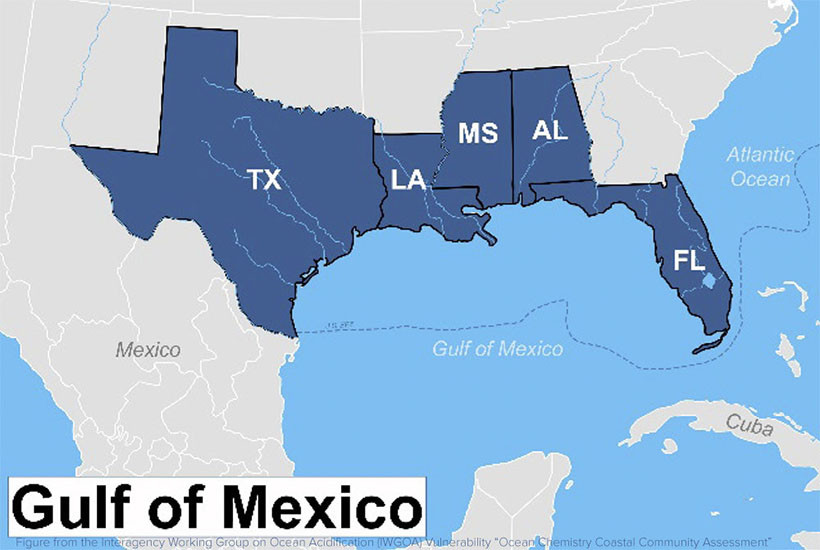Ocean Chemistry Vulnerability Assessment — Report to Congress
The Interagency Working Group on Ocean Acidification (IWGOA) Coastal Communities Vulnerabilities Assessment and Monitoring Priorities report “Ocean Chemistry Coastal Community Assessment” has been published and is now in the hands of Congress. The assessment — which includes contributions from GCAN Steering Committee Chair and IWGOA member Kim Yates, GCOOS Board Member Pat Hogan, an IWGOA member, and GCAN Coordinator Jennifer Vreeland-Dawson — was designed to identify:
- Gaps in ocean acidification (OA) monitoring;
- Geographic areas with gaps in OA research;
- U.S. communities that might be impacted by OA;
- Impacts of changing ocean carbonate chemistry;
- Gaps in understanding of OA impacts on economically/commercially important species;
- Particularly vulnerable habitats;
- Areas in which existing ocean observing assets might be leveraged as platforms for the deployment of new sensors or other applicable observing technologies.
The report describes the vulnerability of coastal communities to acidification in seven regions, each detailed in its own chapter, which describes the communities and industries in the region that are dependent on marine resources that may be impacted by acidification. These include the commercial and recreational fishing industries, aquaculture, Tribal communities, communities engaged in subsistence fishing, communities reliant on coastal ecosystem services, and others that receive value from the ocean, such as artists and spiritual communities.
In most cases, more research is needed to estimate how each group may be impacted by acidification and advances in social science research will improve understanding of the vulnerability of these groups.
Common recommendations across regions include: collecting and synthesizing additional socioeconomic data; improving social-ecological models; developing social indicators relevant to acidification; researching factors that increase sensitivity to impacts from acidification; and considering acidification in the context of other social stressors.
The assessment found that in the Gulf of Mexico, carbonate chemistry remains relatively under-observed in the Gulf of Mexico, which poses critical knowledge, research, and monitoring gaps that limit our current understanding of environmental, ecological, and socioeconomic impacts. It also found that many industry stakeholders are more concerned about hypoxia or harmful algal blooms, despite the fact that these stressors often interact and that international collaboration with Mexico and Cuba is key to understanding the influence of basin-scale OA drivers.














